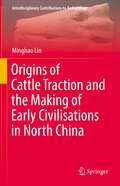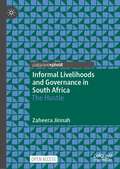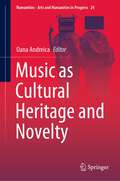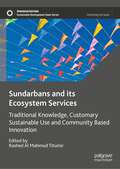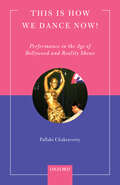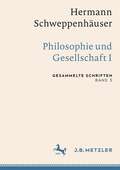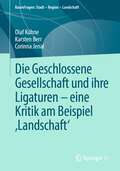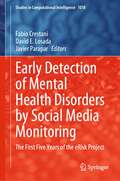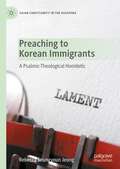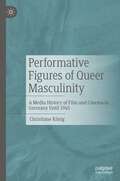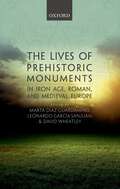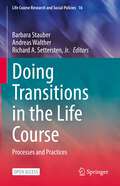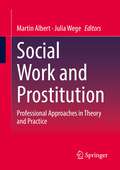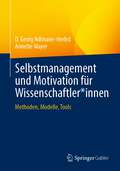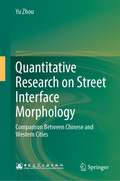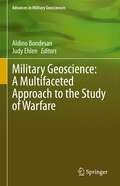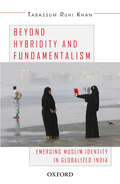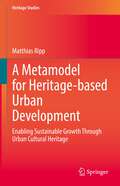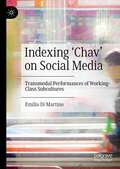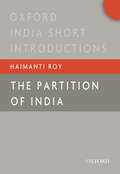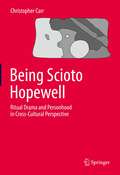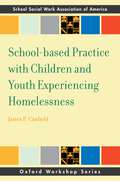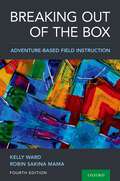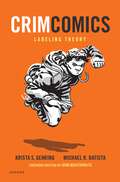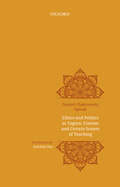- Table View
- List View
Origins of Cattle Traction and the Making of Early Civilisations in North China (Interdisciplinary Contributions to Archaeology)
by Minghao LinThis book is the first to apply systematic palaeopathological, archaeological and historical investigations (using bones as a focus as well as other supporting lines of information) to Chinese osteological materials in order to answer the question about the origins of cattle labour. Structurally, this monograph flows from an introduction and review of previous scholarship and questions, through employed theory and developed methods, to analyses of archaeological materials, and finally finishes by overall discussion and closing remarks.Topics covered in this monograph include the significance of the study of cattle traction in North China, understanding and research into cattle traction within history, art and archaeology, and identifying traction in cattle bones. The author also uses the Pathological Index-refined (PIr) and morphometrics to test the reliability of both methods in identifying traction in cattle bones. The author applies both methods to archaeological sites in the Yellow River region. This book is of interest to researchers studying the Late Bronze Age and zooarchaeology.
Informal Livelihoods and Governance in South Africa: The Hustle
by Zaheera JinnahThis open access book offers a compelling account of everyday life, livelihoods, and governance in post-apartheid South Africa among the urban poor and marginalized, anchored in and through a critique of the concept of informality, or living outside of the state, its laws, services, and protection. Using a case study of the Zama Zama, loosely translated from the isiZulu as ‘to hustle, or to strive’ and colloquially used to refer to those working as informal artisanal miners on Johannesburg’s numerous disused and abandoned gold mines, the book documents an ethnography of this community’s everyday lives, struggles, and hopes. It provides an intimate account of a community, its social relations, and its political relationship to the state. The narratives of the Zama Zama are used to raise broader questions about precarity, belonging, and governance in post-apartheid South Africa, and suggest that pervasive informality could risk the country's democratic order.
Music as Cultural Heritage and Novelty (Numanities - Arts and Humanities in Progress #24)
by Oana AndreicaThis book provides a multifaceted view on the relation between the old and the new in music, between tradition and innovation. This is a much-debated issue, generating various ideas and theories, which rarely come to unanimous conclusions. Therefore, the book offers diverse perspectives on topics such as national identities, narrative strategies, the question of musical performance and musical meaning. Alongside themes of general interest, such as classical repertoire, the music of well-established composers and musical topics, the chapters of the book also touch on specific, but equally interesting subjects, like Brazilian traditions, Serbian and Romanian composers and the lullaby. While the book is mostly addressed to researchers, it can also be recommended to students in musicology, ethnomusicology, musical performance, and musical semiotics.
Sundarbans and its Ecosystem Services: Traditional Knowledge, Customary Sustainable Use and Community Based Innovation (Sustainable Development Goals Series)
by Rashed Al Mahmud TitumirThis edited volume focuses on the largest single tract contiguous mangrove forest in the world— the Sundarbans— exploring traditional knowledge, customary sustainable use and community-based innovation. The book analyses the current state of the Sundarbans, its multiple values and ecosystem services, to demonstrate that Indigenous and local knowledge (ILK) is essential for the conservation and sustainable use of natural resources. Not only does this play an integral role in realising SDG 14 (life below water) and SDG 15 (life on land), it also actively contributes towards achieving many other goals and targets. It contributes a new understanding of sustainability by bringing human-nature relationships in view of the renewed interest in biodiversity and climate change— heightened by the COVID-19 pandemic. The book links scientific knowledge with multi, inter, trans- disciplinary nature of ILK for sustainable development collected from the ground. It challenges the market-based approach in valuing the natural resources, and demonstrates that the valuation of environmental resources through market penetration pricing does not reckon the social benefits and values coproduced through complementarity between humans and nature.
This is How We Dance Now!: Performance in the Age of Bollywood and Reality Shows
by Pallabi ChakravortyThis book is the first scholarly study of Indian dance reality shows and the attendant celebrity culture. It presents an ethnographic and behind-the-scenes study of the lives of reality show dancers and choreographers in obscure and well-known corners of Mumbai and Kolkata. The dancers’ classes, rehearsals, aspirations, and voices—which are often hidden from public gaze—are explored in detail, along with the themes of subjectivity, media-embodiment, pedagogy, gender identity, and social mobility. These explorations are framed by new and original intersections of ideas from the fields of anthropology, dance studies, philosophy, media studies, gender studies, and postcolonial theory. The author offers fascinating, multi-layered analyses into cosmopolitan modernity and the changing visual culture of liberalizing India. Using the lens of dance and dancers, this book offers deep insights into some of the most profound changes taking place in Indian culture today.
Hermann Schweppenhäuser: Gesammelte Schriften, Band 3 (Gesammelte Schriften von Hermann Schweppenhäuser)
Der dritte Band der Gesammelten Schriften von Hermann Schweppenhäuser enthält im ersten Teil systematische Erörterungen sozialphilosophischer Begriffe, im zweiten Teil Abhandlungen mit philosophiegeschichtlichen Schwerpunkten (vom späten 18. bis zum Ende des 19. Jahrhunderts) und im dritten Teil Texte, die im Zusammenhang mit der akademischen philosophischen Lehre stehen. Ergänzt wird der Band durch einen Brief von Theodor W. Adorno aus dem Jahre 1960 und ein Nachwort von Schweppenhäusers langjährigen Kollegen Günther Mensching. Eine „spezifische Verbindung von scharfer Kritik am Üblichen und Konventionellen mit eindringlicher Besinnung auf die Verbindlichkeit vergangener geistiger Zeugnisse kennzeichnet, über die Gründer der Frankfurter Schule weit hinaus, die Denkweise Hermann Schweppenhäusers. Die Komplexität seines Stils macht die Anstrengung spürbar, Kontinuität und radikale Diskontinuität der europäischen Kultur, zumal der deutschen, zusammenzudenken. Kein anderes Mitglied der Schule hat sich so hingebungsvoll seinen Gegenständen zugewendet wie er.“ (Günther Mensching)
Die Geschlossene Gesellschaft und ihre Ligaturen – eine Kritik am Beispiel ‚Landschaft‘ (RaumFragen: Stadt – Region – Landschaft)
by Olaf Kühne Karsten Berr Corinna JenalAngesichts großer Herausforderungen hat utopistisches Denken aktuell Konjunktur. Dass Utopien, mit ihren Vorstellungen einer idealisierten Zielgesellschaft, mit den Grundzügen einer Offenen Gesellschaft nicht vereinbar sind, hat bereits Karl Popper in seinem Buch ‚Die Offene Gesellschaft und ihre Feinde‘ unter dem Eindruck von Nationalsozialismus und Stalinismus herausgearbeitet. In dem vorliegenden Buch werden weitere Formen Geschlossener Gesellschaften und die prinzipiellen Ähnlichkeiten (und Verschiedenheiten) ihrer Konstruktion untersucht. Dies geschieht in Rückgriff auf Ralf Dahrendorfs Lebenschancenkonzept, in dem er sich mit dem Zusammenspiel von Optionen und Ligaturen befasst. Die Ambivalenz des Verständnisses von Ligaturen bei Dahrendorf, da sie einerseits Optionen einschränken, ihnen andererseits auch Sinn verleihen, wird durch eine dreifache Differenzierung aufgelöst: in ethische und moralische, innen- und außengeleitete sowie explizite und implizite Ligaturen. Während die jeweils erstgenannten dazu geeignet sind, Lebenschancen zu ermöglichen, schränken die jeweils zweitgenannten diese tendenziell ein. Davon ausgehend, arbeiten die Autoren heraus, welche landschaftlichen (Neben)Folgen verschiedene Geschlossene Gesellschaften aufweisen und wie wenig geeignet sie für den Umgang mit aktuellen Herausforderungen sind.
Early Detection of Mental Health Disorders by Social Media Monitoring: The First Five Years of the eRisk Project (Studies in Computational Intelligence #1018)
by Fabio Crestani David E. Losada Javier ParapareRisk stands for Early Risk Prediction on the Internet. It is concerned with the exploration of techniques for the early detection of mental health disorders which manifest in the way people write and communicate on the internet, in particular in user generated content (e.g. Facebook, Twitter, or other social media).Early detection technologies can be employed in several different areas but particularly in those related to health and safety. For instance, early alerts could be sent when the writing of a teenager starts showing increasing signs of depression, or when a social media user starts showing suicidal inclinations, or again when a potential offender starts publishing antisocial threats on a blog, forum or social network. eRisk has been the pioneer of a new interdisciplinary area of research that is potentially applicable to a wide variety of situations, problems and personal profiles.This book presents the best results of the first five years of the eRisk project which started in 2017 and developed into one of the most successful track of CLEF, the Conference and Lab of the Evaluation Forum.
Preaching to Korean Immigrants: A Psalmic-Theological Homiletic (Asian Christianity in the Diaspora)
by Rebecca Seungyoun JeongIn terms of practical-theology’s critical reflection on marginalized people’s wounds in a wider society, this book investigates the question, “How to proclaim the good news in response to first-generation Korean immigrants’ contextual suffering in the United Sates?” To answer the question, the book starts with investigating Korean immigrant hearers’ contextual predicaments in a new land to point out emerging practical-theological issues in relation to the practice of preaching. In this book, the primary subjects are first-generation Korean immigrants, especially those who have relatively low socio-economic status and struggle with the purpose of their lives as immigrants, particularly those whose material dreams have been shattered.In order to proclaim the good news, this book proposes a more appropriate immigrant theology for/in the practice of preaching by reclaiming the priorities of God’s future in our lives and confirming God’s active identification with Korean immigrant congregations in the depths of their predicament. Such reconstructive work for immigrant theology arises in response to their existential hardships, marginality, ethnic discrimination, and relative powerlessness in life.While acknowledging both the possibilities and limits of the diverse forms of current Korean immigrant preaching, the book then offers a strategic proposal for a new homiletic theory, namely “a psalmic-theological homiletic.” This proposed homiletic is deeply rooted in the theology of the Psalms and their rhetorical movement. This re-envisioned mode of eschatological and prophetic preaching in times of difficulty recovers ancient Israel’s psalmic, rhetorical tradition that aims toward faith. Its theological-rhetorical strategy intends to both transform hearers’ habitus of living in faith and enhance their hope-filled life through communal anticipation of God’s coming future on the margins. Specifically, this proposed homiletic critically adopts key features from psalms of lament and their typical, fourfold theological-rhetorical movement (i.e., lament, retelling a story, confessional doxology, and obedient vow) as now core elements of a revised Korean-immigrant preaching practice.
Performative Figures of Queer Masculinity: A Media History of Film and Cinema in Germany Until 1945
by Christiane KönigThis is a German history of cinema and film from the 1890s to 1945 with a focus on queer masculinity. Using media studies approaches, the study shows how film as a new medium is constituted through performative re-enactments of spectacular elements from the entertainment and knowledge cultures of the 19th century. In it, bodies, desires and identities are constantly remodelled through the formation of difference. Therefore, male queerness here does not mean the representation of male homosexuality. Rather, it is the dynamic result of complex medial processes, affects and (self-)knowledge on and off the screen. Building on Eve K. Sedgwick's queer-feminist concept of queer performativity, the author creates a historically situated model with which she traces various figures of technically anthropomorphic queer masculinity in the medium of film in an empowering sense. This book is a translation of an original German 1st edition Performative Figuren queerer Männlichkeit by Christiane König, published by J.B.Metzler, imprint of Springer-Verlag GmbH Germany, part of Springer Nature in 2020. The translation was done with the help of artificial intelligence (machine translation by the service DeepL.com). The author (with the friendly support of Megan Hanson) has subsequently revised the text further in an endeavour to refine the work stylistically. Springer Nature works continuously to further the development of tools for the production of books and on the related technologies to support authors.
The Lives of Prehistoric Monuments in Iron Age, Roman, and Medieval Europe
This volume explores the pervasive influence exerted by some prehistoric monuments on European social life over thousands of years, and reveals how they can act as a node linking people through time, possessing huge ideological and political significance. Through the advancement of theoretical approaches and scientific methodologies, archaeologists have been able to investigate how some of these monuments provide resources to negotiate memories, identities, and power and social relations throughout European history. The essays in this collection examine the life-histories of carefully chosen megalithic monuments, stelae and statue-menhirs, and rock art sites of various European and Mediterranean regions during the Iron Age and Roman and Medieval times. By focusing on the concrete interaction between people, monuments, and places, the volume offers an innovative outlook on a variety of debated issues. Prominent among these is the role of ancient remains in the creation, institutionalization, contestation, and negotiation of social identities and memories, as well as their relationship with political economy in early historic European societies. By contributing to current theoretical debates on materiality, landscape, and place-making, The Lives of Prehistoric Monuments in Iron Age, Roman, and Medieval Europe seeks to overcome disciplinary boundaries between prehistory and history, and highlight the long-term, genealogical nature of our engagement with the world.
Doing Transitions in the Life Course: Processes and Practices (Life Course Research and Social Policies #16)
by Barbara Stauber Andreas Walther Richard A. SetterstenThis open access book provides a unique research perspective on life course transitions. Here, transitions are understood as social processes and practices. Leveraging the recent “practice turn” in the social sciences, the contributors analyze how life course transitions are “done.” This book introduces the concept of “doing transitions” and its implications for theories and methods. It presents fresh empirical research on “doing transitions” in different life phases (e.g., childhood, young adulthood, later life) and life domains (e.g., education, work, family, health, migration). It also emphasizes themes related to institutions and organizations, time and normativity, materialities (such as bodies, spaces, and artifacts), and the reproduction of social inequalities in education and welfare. In coupling this new perspective with empirical illustrations, this book is an indispensable resource for scholars from demography, sociology, psychology, social work and other scientific fields, as well as for students, counselors and practitioners, and policymakers.
Social Work and Prostitution: Professional Approaches in Theory and Practice
by Martin Albert Julia WegeProstitution is a taboo fringe area of society, about which there is hardly any well-founded information and scientific knowledge. Women who work in prostitution have to struggle with social prejudices, social discrimination and legal disadvantages and therefore need specific counseling and low-threshold services. Social work has a long tradition of helping this target group on a case-by-case basis and advocates for the rights and dignity of women. From the perspective of professional social work, this volume provides an overview of the complexity of the field of prostitution and presents theoretical and methodological approaches.This book is a translation of the original German 1st edition Soziale Arbeit und Prostitution by Martin Albert and Julia Wege, published by Springer Fachmedien Wiesbaden GmbH, part of Springer Nature in 2015. The translation was done with the help of artificial intelligence (machine translation by the service DeepL.com). A subsequent human revision was done primarily in terms of content, so that the book will read stylistically differently from a conventional translation. Springer Nature works continuously to further the development of tools for the production of books and on the related technologies to support the authors.
Selbstmanagement und Motivation für Wissenschaftler*innen: Methoden, Modelle, Tools
by D. Georg Adlmaier-Herbst Annette MayerIn diesem Buch lernen Sie wissenschaftlich fundierte Modelle kennen, mit denen Sie Ihr Selbstmanagement als Wissenschaftler*in systematisch und langfristig gestalten können. Im Zentrum des wissenschaftlichen Arbeitens steht der Inhalt. Jedoch ist auch gutes Selbstmanagement hilfreich, um zum optimalen Ergebnis zu gelangen. Selbstmanagement meint zum einen, sich für unliebsame oder herausfordernde Aufgaben zu motivieren, wie das langwierige Recherchieren in Bibliotheken, das Verfassen von Papers, das Fertigstellen von Dissertationen etc. Zum anderen bezeichnet Selbstmanagement auch das Verringern von negativen Gefühlen, wie Lampenfieber vor Präsentationen des eigenen Forschungsvorhabens, Unsicherheit vor wichtigen Gesprächen oder Konflikte mit Kollegen und Vorgesetzten. Gerade in Zeiten der zunehmenden Digitalisierung und der Arbeit im Homeoffice wird die eigene Motivation umso bedeutender, da oft die persönliche Ansprache und die Motivation durch den Kontakt und den Austausch im Team vermisst werden. Die Kernfrage lautet, wie Selbstmanagement im Einklang mit der eigenen Persönlichkeit und der eigenen Situation gelingen kann. Die Autoren leiten Sie an, eigene Stärken und Möglichkeiten als Ressourcen zu erkennen, diese wertzuschätzen und systematisch zu nutzen. Hierdurch können Sie auf eine neue, ressourcenorientierte Art mit sich umgehen und sich selbst ein wenig besser kennenlernen. Sie stellen positive Auswirkungen auf sich und andere fest und erweitern Ihren Entscheidungsspielraum sowie Ihr Handlungsrepertoire, auch in schwierigen Situationen.
Quantitative Research on Street Interface Morphology: Comparison Between Chinese and Western Cities
by Yu ZhouThis book investigates the historical evolution, regional differences, and quantitative measurement on street interface, which forms the street space and plays a very important role in urban form. Empirical research reveals the street interface in Chinese cities are much more complicated than European and American cities. This book explores the reason and reveals the relationship between street interface and urban form in morphology. By constructing quantitative measurement method on street interface morphology, quantitative parameters can be used in urban planning guidelines in China. Both researchers and students working in architecture, urban design, urban planning and urban studies can benefit from this book.
Military Geoscience: A Multifaceted Approach to the Study of Warfare (Advances in Military Geosciences)
by Judy Ehlen Aldino BondesanThis volume presents a selection of papers from the 13th International Conference on Military Geosciences (ICMG), held 24-28 June 2019 in Padua, Italy. It covers a wide range of subjects within the confines of military geoscience written by scientists with a variety of different backgrounds from many countries throughout the world. Many of the papers focus on subjects related to Italy and World War I, but additional subject areas include international perspectives in the military geosciences, international security, geospatial intelligence and remote sensing, subterranean and underground warfare, analyses of historical battlefields and fortifications, and military archaeology. The book will be of interest to academics (e.g., military historians, military archaeologists, military geographers and geologists), applied geoscientists (e.g., engineering geologists and geologists working in other areas of applied geology), professional geoscientists, and those with a general interest in military geoscience and history.
Beyond Hybridity and Fundamentalism: Emerging Muslim Identity in Globalized India
by Tabassum Ruhi KhanThe question of identity and especially its formation among youth, has received significant academic attention as our worlds become intricately and unpredictably connected through satellite televisions, mobile telephones, Internet and social networking platforms. Marking a distinct addition to such scholarship, this volume is an ethnographic study of the under-investigated issue of Indian Muslim youth's emergent subjectivity in a media-saturated globalized Indian society. The author develops the idea of 'convoluted modernity' to explain Muslim youth's reactions to multifarious and divergent influences both from the East as well as the West shaping their everyday life. The concept illustrates how Muslim youths' ideas about self and community draw equally on MTV as on Peace TV to create a complex truck between consumerist hedonism and globalized Islam. Introducing a new perspective to studies on globalization, media and cultural politics, this book shows how interpolation of local and global in the accelerated virtual spheres and their contextual interpretation within an expanding economy, notwithstanding Muslim youth's disadvantaged position, shape alternate modernities rife with ambiguities and beyond binaries of progress and regression.
A Metamodel for Heritage-based Urban Development: Enabling Sustainable Growth Through Urban Cultural Heritage (Heritage Studies)
by Matthias RippThis book proposes a Metamodel for heritage-based urban development, based on urban morphology, governance theory, and the metamodeling concept of John P. Van Gigch. Building on international policies such as the 2011 Recommendation for Historic Urban Landscapes and the results of the 2016 Urban Habitat III Conference, cultural heritage is now regarded as a potential resource for sustainable urban development. While more and more evidence of the potential benefits of cultural heritage for sustainable development has been published, this book is the first to develop and design a Metamodel that can be universally applied in a wide variety of settings. The Metamodel was developed using grounded theory and design research methodology and is based on three successful case-models from European contexts. The book includes three application scenarios that elaborate how the metamodel can be used to design, evaluate, and improve processes where cultural heritage is a starting point for sustainable urban development.
Indexing ‘Chav’ on Social Media: Transmodal Performances of Working-Class Subcultures
by Emilia Di MartinoThe book sets out to examine the concept of 'chav', providing a review of its origins, its characterological figures, the process of enregisterment whereby it has come to be recognized in public discourse, and the traits associated with it in traditional media representations. The author then discusses the 'chav' label in light of recent re-appropriations in social network activity (particularly through the video-sharing app TikTok) and subsequent commentary in the public sphere. She traces the evolution of the term from its use during the first decade of the twenty-first century to make sense of class, status and cultural capital, to its resurgence and the ways in which it is still associated with appearance in gendered and classed ways. She then draws on recent developments in linguistic anthropology and embodied sociocultural linguistics to argue that social media users draw on communicative resources to perform identities that are both situated in specific contexts of discourse and dynamically changing, challenging the idea that geo-sociocultural varieties and mannerisms are the sole way of indexing membership of a community. This volume contends that equating 'chav' with 'underclass' in the most recent uses of the concept on social networks may not be the whole story, and the book will be of interest to sociocultural linguistics and identity researchers, as well as readers in anthropology, sociology, British studies, cultural studies, identity studies, digital humanities, and sociolinguistics.
The Partition of India (Oxford India Short Introductions)
by Haimanti RoyWas the Partition of India inevitable? Was it a ‘clash of civilizations’ between Hindus, Muslims, and Sikhs of the Indian subcontinent? Was the Partition a momentous event or a long-drawn-out messy process? Were the experiences of uprooting, violence, and rehabilitation in the divided provinces of Bengal and Punjab the same? What are the multiple legacies and memories of the Partition? More than 70 years have passed since this upheaval, yet we continue to grapple with such questions. The Partition remains in the memories of those families and individuals who lived through the trauma of violence and uprooting, the loss of life, and the travails of survival. This short introduction provides a comprehensive account of the causes, experience, and aftermath of this division and acquaints its readers with major debates in a succinct manner. It situates the history and politics of the division within the broader histories of colonial and postcolonial South Asia and draws attention to the multiplicity of meanings of 1947 and their relevance in framing and understanding contemporary challenges in South Asia.
Being Scioto Hopewell: Ritual Drama and Personhood in Cross-Cultural Perspective
by Christopher CarrThis book, in two volumes, breathes fresh air empirically, methodologically, and theoretically into understanding the rich ceremonial lives, the philosophical-religious knowledge, and the impressive material feats and labor organization that distinguish Hopewell Indians of central Ohio and neighboring regions during the first centuries CE. The first volume defines cross-culturally, for the first time, the “ritual drama” as a genre of social performance. It reconstructs and compares parts of 14 such dramas that Hopewellian and other Woodland-period peoples performed in their ceremonial centers to help the soul-like essences of their deceased make the journey to an afterlife. The second volume builds and critiques ten formal cross-cultural models of “personhood” and the “self” and infers the nature of Scioto Hopewell people’s ontology. Two facets of their ontology are found to have been instrumental in their creating the intercommunity alliances and cooperation and gathering the labor required to construct their huge, multicommunity ceremonial centers: a relational, collective concept of the self defined by the ethical quality of the relationships one has with other beings, and a concept of multiple soul-like essences that compose a human being and can be harnessed strategically to create familial-like ethical bonds of cooperation among individuals and communities. The archaeological reconstructions of Hopewellian ritual dramas and concepts of personhood and the self, and of Hopewell people’s strategic uses of these, are informed by three large surveys of historic Woodland and Plains Indians’ narratives, ideas, and rites about journeys to afterlives, the creatures who inhabit the cosmos, and the nature and functions of soul-like essences, coupled with rich contextual archaeological and bioarchaeological-taphonomic analyses. The bioarchaeological-taphonomic method of l’anthropologie de terrain, new to North American archaeology, is introduced and applied. In all, the research in this book vitalizes a vision of an anthropology committed to native logic and motivation and skeptical of the imposition of Western world views and categories onto native peoples.
School-based Practice with Children and Youth Experiencing Homelessness (SSWAA Workshop Series)
by James CanfieldSchools are facing increasing numbers of homeless students and school social workers and other related professionals are often at the front line of addressing the negative impact homelessness brings to individual students and the school overall. School social workers and other school-based personnel must contend with a myriad of policies and other factors related to homelessness to help students obtain an education. School-based Practice with Children and Youth Experiencing Homelessness is one of the first books to focus on this topic in the context of our social work practice. This book guides practitioners through the conceptualization of homelessness, how experiencing homelessness impacts the children we serve, the policies that govern us, and finally a practice perspective. Written with practitioners in mind, School-based Practice with Children and Youth Experiencing Homelessness is loaded with case studies and practice examples and is an accessible handbook to addressing homelessness in our schools.
Breaking Out of the Box: Adventure-Based Field Instruction
by Kelly Ward Robin Sakina MamaMoving from the classroom to the field is often a daunting transition for social work students. In this new edition of their celebrated text, Kelly Ward and Robin Sakina Mama address student fears and concerns with a straightforward, adventure-based instruction method. Using interactive exercises to integrate cross-curricula content, Breaking Out of the Box, Fourth Edition, encourages students to gain perspective and insight as they navigate field placement and their growing careers. Previous editions of Breaking Out of the Box have been commended for their direct and honest approach to a wide array of concerns shared by social workers and students. The fourth edition returns to this mission with a new chapter on emotional intelligence written with the authors' hands-on and direct approach. The book's exercises allow students to become comfortable using vital social work tools and theories outside of the classroom. Emphasis on individual decision making within group settings fosters independent skills and confidence in addition to proficient group work and leadership skills. In Breaking Out of the Box, Ward and Mama prepare social work students for the full scope of their careers in the field in one crucial text.
CrimComics Issue 11: Labeling Theory
by Krista S. GehringCrimComics offers a new way to approach criminological theory by engaging students with impactful, highly visual illustrated texts. Each CrimComics Issue traces the development of the theory--placing it in social and political context--and demonstrates its application to the real world. The last page of each Issue features review questions and key terms.
Ethics and Politics in Tagore, Coetzee and Certain Scenes of Teaching
by Gayatri Chakravorty SpivakGayatri Chakravorty Spivak’s Ethics and Politics in Tagore, Coetzee and Certain Scenes of Teaching attempts to track the ‘literary’ in the production of ethics and politics. Ethics here is not an inventory of moral principles to be followed in action. Instead, the ethical is proposed as an unconditional call to which the human being must learn to respond. Even years after its publication, the arguments Spivak makes retain their relevance for students of the social sciences.
